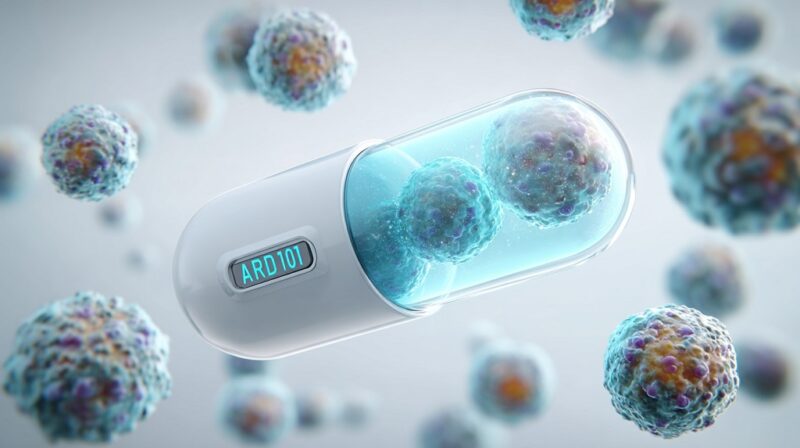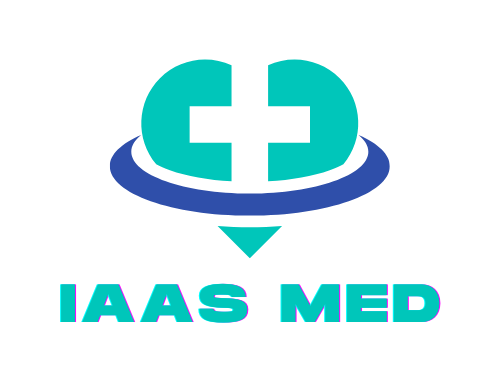Chronic overeating, obesity, and metabolic syndromes remain some of the most challenging public health concerns of the 21st century. According to the CDC, nearly 42.4% of adults in the United States are classified as obese, while more than 70% are either overweight or obese.
This epidemic has massive healthcare consequences, increasing the risk of type 2 diabetes, heart disease, stroke, liver dysfunction, and certain types of cancer.
While lifestyle interventions such as diet and exercise remain foundational, pharmacological solutions have become increasingly important in the battle against excessive appetite and poor metabolic control.
The recent popularity of GLP‑1 receptor agonists such as semaglutide (Wegovy, Ozempic) and tirzepatide (Zepbound, Mounjaro) has introduced a new era in obesity treatment.
These drugs have shown impressive weight loss results – often exceeding 15–20% total body weight in clinical trials. However, their use is accompanied by drawbacks: they are injectable, expensive, and often come with gastrointestinal side effects like nausea, vomiting, and diarrhea.
More importantly, when treatment stops, appetite returns rapidly, and weight regain is common. These limitations highlight the need for novel oral therapeutics that address appetite safely, effectively, and with fewer long-term side effects. This is where ARD‑101, developed by Aardvark Therapeutics, could make a significant impact.
ARD‑101: A New Mechanism for Satiety

Unlike traditional weight-loss drugs that act systemically or target brain chemistry, ARD‑101 works via gut-restricted activation of TAS2Rs, or bitter taste receptors.
These receptors are naturally found in the gastrointestinal tract, and when activated, they trigger the release of endogenous gut hormones such as GLP‑1 (glucagon-like peptide-1), GLP‑2, and cholecystokinin (CCK).
These hormones collectively signal satiety, slow gastric emptying, regulate glucose metabolism, and reduce the drive to eat. The result is a natural, hormone-mediated suppression of appetite that does not rely on manipulating brain chemistry.
The uniqueness of ARD‑101 lies in its gut-restricted activity – it does not significantly enter the bloodstream. This drastically reduces the likelihood of systemic side effects while allowing localized action on the cells responsible for hormonal signaling.
In other words, ARD‑101 offers central metabolic benefits with peripheral delivery, creating a targeted effect that mimics the benefits of GLP‑1 drugs without their adverse systemic exposure.
Phase 1 and 2 Trial Data: Safety and Efficacy Combined
Clinical trials for ARD‑101 began with a Phase 1 study designed to assess safety, pharmacokinetics, and hormonal response. Participants were healthy adults who received oral doses ranging from 30 mg to 240 mg.
The compound showed extremely limited systemic absorption, with >99% remaining in the gut, and no serious adverse events were recorded. At higher doses, increases in satiety hormones were observed, particularly GLP‑1 and CCK, within hours of ingestion.
In Phase 2 trials, ARD‑101 was tested on individuals with elevated hunger profiles and certain metabolic disorders. In one double-blind, placebo-controlled study involving patients with obesity, ARD‑101 produced a 2.51× greater reduction in hunger scores compared to placebo, a statistically significant result.
Importantly, this effect was achieved without the common nausea, vomiting, or fatigue often seen with GLP‑1 injections. These findings suggest that ARD‑101 could deliver meaningful appetite suppression while preserving quality of life and patient comfort.
Application in Rare and Complex Disorders

ARD‑101’s safety profile and hormone-targeting mechanism make it particularly valuable in populations with complex appetite dysregulation. One such group is individuals with Prader-Willi Syndrome (PWS) – a rare genetic condition marked by extreme, uncontrollable hunger (hyperphagia).
In a small open-label study with 12 PWS patients, 11 showed significant reductions in food cravings, and 4 achieved near elimination of compulsive eating behaviors. This is particularly promising, as existing medications for PWS have limited efficacy and significant psychiatric or metabolic side effects.
The drug is also being explored for post-bariatric surgery patients who regain weight. This population is difficult to treat pharmacologically, as surgery often alters the gastrointestinal tract’s absorption patterns and hormonal feedback loops.
Because ARD‑101 acts locally in the gut and stimulates the same hormonal mechanisms often enhanced by bariatric surgery, it may serve as an effective post-surgical maintenance tool to sustain weight loss and suppress rebound hunger.
Hormonal Pathways and Appetite Control

To fully appreciate ARD‑101’s therapeutic promise, it’s helpful to understand the hormones it activates and their roles in appetite regulation.
| Hormone | Source | Function in Satiety |
| GLP‑1 | Intestinal L-cells | Delays gastric emptying, promotes insulin secretion, decreases appetite |
| GLP‑2 | Intestinal L-cells | Enhances gut integrity, improves nutrient absorption |
| CCK | Duodenum | Signals fullness to the brain, slows digestion |
As ARD‑101 advances toward later-stage clinical trials and eventual commercialization, medication adherence becomes a key concern. Oral medications require daily, consistent use to maintain therapeutic levels and hormonal effects.
This is especially important for appetite suppressants, where missed doses can result in hunger spikes and reduced efficacy. According to behavioral adherence studies, tools like the Acedada Pill Organizer have been shown to increase daily medication compliance by up to 30% in adults managing chronic conditions.

While a simple pill organizer may seem trivial, in the context of long-term weight management, it plays a crucial role. Maintaining daily adherence ensures consistent activation of gut receptors and stable hormone release, which is essential for achieving sustainable appetite control.
In fact, higher adherence has been strongly linked to better clinical outcomes in both obesity and diabetes trials involving oral medications.
Market Dynamics and Future Positioning

The appetite suppressant market is undergoing rapid transformation. With blockbuster success stories like Wegovy ($13B+ projected revenue by 2025), pharmaceutical companies are rushing to develop safer, more accessible alternatives. ARD‑101 has several differentiating advantages:
- Oral delivery, eliminating the need for injections
- Minimal side effects, thanks to gut-restricted action
- Broad hormonal activation (GLP‑1, GLP‑2, CCK)
- Utility in rare disease contexts, such as PWS and hypothalamic obesity
- Scalability, due to small molecule formulation and low production cost
If ARD‑101 continues to demonstrate efficacy in upcoming trials – particularly in larger, placebo-controlled Phase 3 studies – it could become a first-line oral therapy for appetite control across both general and specialized populations.
Furthermore, its compatibility with adjunctive therapies (e.g., combining with DPP‑4 inhibitors) may make it even more appealing for patients with type 2 diabetes or metabolic syndrome.
Final Thoughts:
While ARD‑101 is still in the clinical development pipeline, its scientific profile and clinical performance to date make it one of the most promising appetite suppressant candidates on the horizon.
Its non-systemic, gut-specific action, broad hormonal impact, and excellent safety record position it well in a market dominated by drugs with heavy side effect burdens and high costs.
If future trials validate its efficacy and tolerability in large populations, ARD‑101 could redefine how appetite suppression is approached – offering patients an effective, sustainable, and accessible alternative to current pharmacologic tools.
More than just another pill, ARD‑101 represents a return to physiological logic: working with the body’s own satiety signals to regulate hunger naturally and safely.
Related Posts:
- Why Your Healthcare Job Application Goes Unnoticed?…
- Why Full Mouth Dental Implants Are Worth the Investment
- Why Hemorrhoids Might Smell and When to Seek Help
- Why Should Heart Patients Be More Vigilant About…
- Why Swelling in the Legs Should Never Be Ignored
- Workplace Health Consultations: What Gets Reviewed and Why















